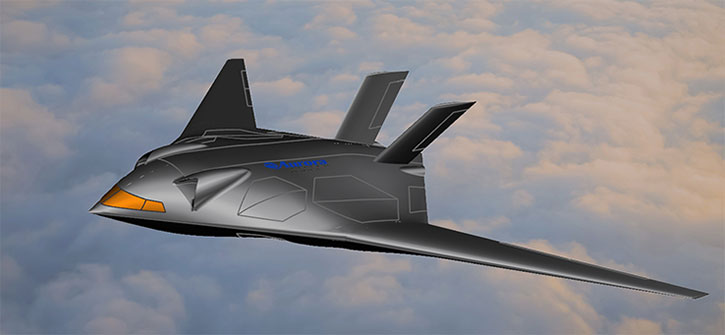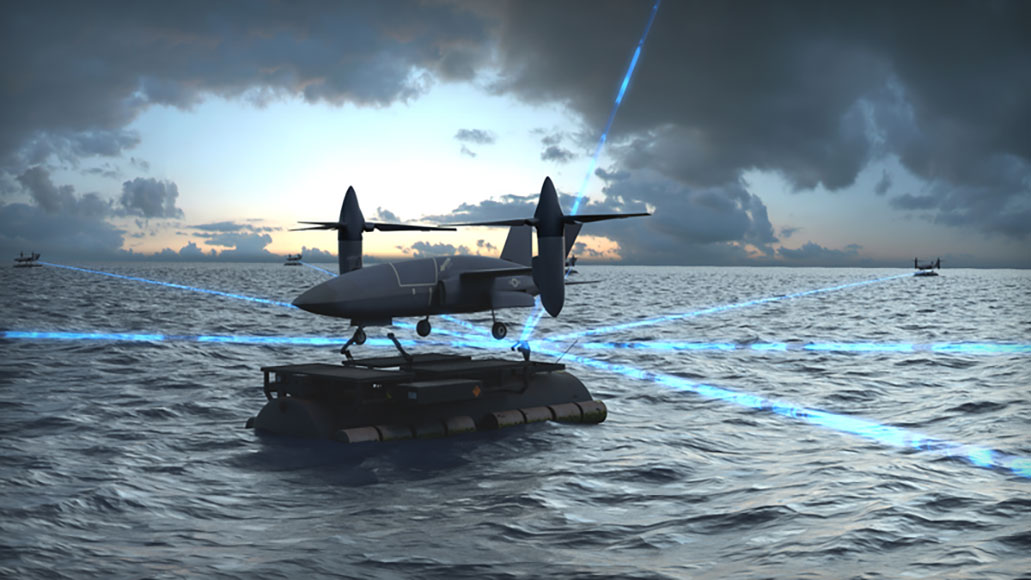In November 2023, DARPA selected four companies to provide conceptual designs for the SPeed and Runway INdependent Technologies (SPRINT), an X-Plane demonstration project aimed to explore new concepts for high-speed vertical lift. The companies selected include Aurora Flight Sciences, Bell Textron, Northrop Grumman Aeronautic Systems, and Piasecki Aircraft Corporation. The SPRINT program aims to design, build, and fly an X-Plane to demonstrate technologies and integrated concepts necessary for a transformational combination of aircraft speed and runway independence. This initial award funds work to reach a conceptual design review (Phase 1A) and includes an executable option to continue to work through a preliminary design review. Two of the competitors have already unveiled preliminary designs and technology overviews for the program.
AuroraFlight Sciences
Under this award, Aurora is designing a high lift, low drag fan-in-wing (FIW) demonstrator aircraft that integrates a blended wing body platform, with embedded engines and moderate sweep, with a vertical flight design comprised of embedded lift fans linked to the engines via mechanical drives. The aircraft would deliver game-changing air mobility capability by combining cruise at over 450 KTAS with vertical takeoff and landing (VTOL) in a single platform. The combined Aurora and Boeing teams bring deep experience in agile vehicle prototyping, vertical lift and cruise transition technology, and blended wing body aero performance. The program will build on past flight programs like the Boeing X-48 blended wing body aircraft and the Aurora Excalibur UAS that combined jet-borne vertical lift with three electric, louvered lift fans that would retract into the wing in forward flight.

Bell Textron
Bell plans to leverage its extensive investment in High-Speed Vertical Takeoff and Landing (HSVTOL) technology to demonstrate advanced performance capabilities. Bell is currently conducting risk reduction testing at Holloman Air Force Base in New Mexico to demonstrate its folding rotor, integrated propulsion, and flight control technologies using a dedicated test article. Bell’s HSVTOL technology blends the hover capability of a helicopter with speed (400+ kits), range, and survivability of jet aircraft.
Design work will occur at Aurora and Boeing facilities across multiple states, including Virginia, Massachusetts, and Pennsylvania. The program targets the X-Plane demonstrator’s first flight within 42 months.




















